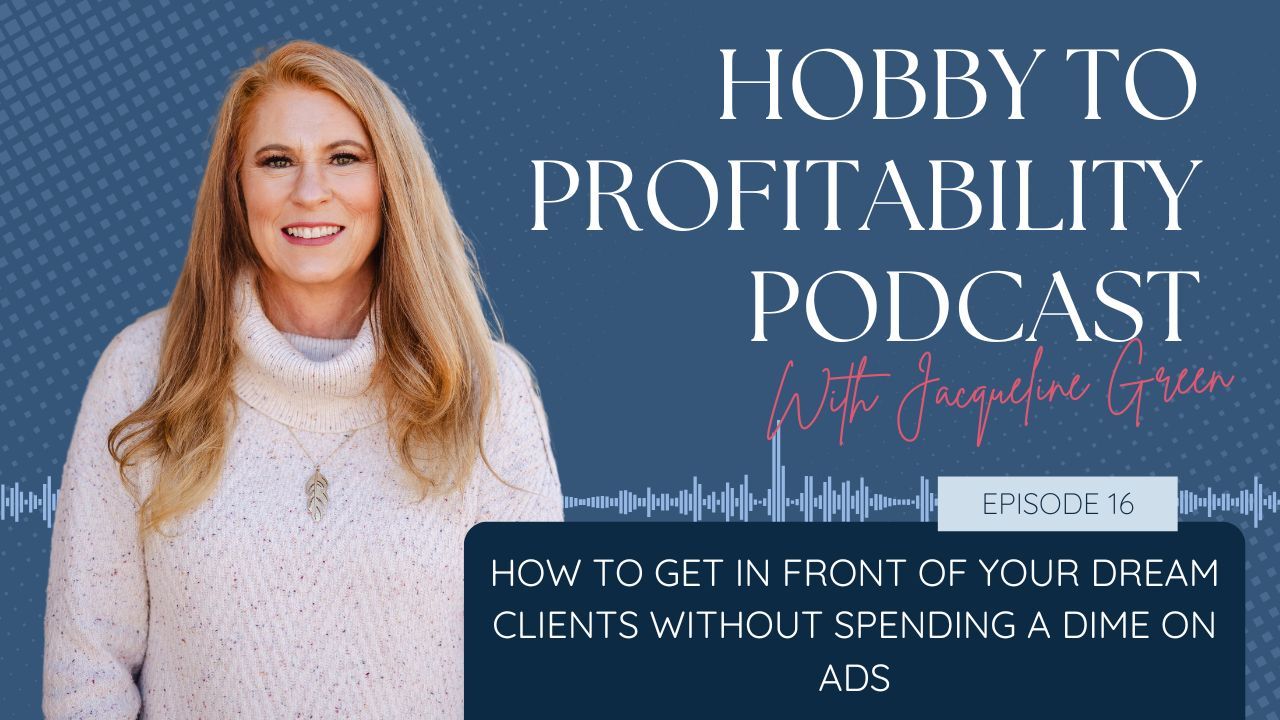Revamping Your Interior Design Business: Identifying and Nurturing Your Target Audience
Oct 23, 2023
Identifying your target audience is an essential step in the journey to building a profitable interior design business. While most marketing advice emphasizes understanding your audience thoroughly, figuring out where to start can be challenging, especially if you're a budding interior designer. This article explores key indicators to help you pinpoint your target audience and provides three new tips for achieving that clarity.
I often find myself at networking events, where participants take turns introducing themselves, their businesses, and describing their ideal clients. It's fascinating to observe how many business owners believe that everyone could be a potential client for their services.
However, the truth is not everyone needs what you offer. Take, for example, a residential designer who claims their ideal client is anyone who owns a home. While home ownership is indeed a common factor, not every homeowner can afford an interior designer, and many prefer the DIY route.
As a designer, your target audience is more specific than the blanket statement of "any homeowner." You're searching for individuals who not only own their homes but also boast a substantial household income and have specific concerns about their living spaces, such as the desire to transform their kitchen.
These conversations led me to a realization. Many designers struggle to narrow down their target audience, fearing they may miss out on an opportunity. As business owners, we stress about bring in paying clients. We often are so desperate for business, especially at the beginning of our business, we look for anyone who will buy. This behavior often leads to working with the wrong clients. I talk about difficult clients in a recent article: “How to Deal With Difficult Clients — And When Is It Okay to Fire Them?”
We waste time, energy, and money when we target the wrong target audience. This is why it is important to narrow your focus so you aren’t spinning your wheels. But how do you stop wasting time, energy, and money on attracting the wrong target audience?
Tip 1: Define Your Audience Beyond Demographics
Your target audience isn't solely about demographics, such as age, profession, income, or neighborhood. Look into psychographics, which encompasses feelings, social status, beliefs, personality traits, and more.
For instance, an affluent couple living in a million-dollar neighborhood might not be your ideal clients if they are DIY enthusiasts who prefer doing their own home improvements. Understanding their thoughts, beliefs, and actions takes you beyond demographics. Learn where they socialize, shop, dine, and what causes they support through time and money. Establishing a personal connection with your audience can significantly boost your business growth.
You might look for professionals who travel extensively or are growing a business. These folks are often too busy to do their own projects and need someone to help them. Understanding your audience at this level will save you both time and money, enabling them to develop messaging that resonates with the high-end market.
Tip 2: Narrow Your Audience Size
Seth Godin's concept of the "smallest viable market" can be transformative for interior designers. Instead of trying to appeal to everyone, focus on a smaller, well-defined audience. By doing so, you can provide a higher level of service and build stronger relationships. This approach is about serving your customers rather than just selling to them.
Reducing your audience size might seem daunting, as it feels like you're limiting your revenue potential. However, in reality, it can lead to increased profits and customer satisfaction. Satisfied customers are more likely to refer others, ultimately driving profits.
While you might want to cater to a broad audience, targeting a smaller, specific group enables you to craft a more effective marketing message, save time and energy, and deliver a premium service.
Highly recommend any of Seth Godin's books, but he specifically talks about target audiences to the smallest viable market in "This is Marketing." It is a quick, easy read packed with valuable information.
New Tip 3: Analyze Your Current Customer Base
To find your core audience that will boost your revenue, start by analyzing your existing and past clients. Over the past two to five years, compile a list of clients, including their demographics and services they've purchased. Additionally, consider the organizations they support, their social beliefs, and their overall attitude.
In your analysis, evaluate how these clients treated your team, how many over-reactional calls you received, and the number of change orders they made, which could potentially cost you more time and money. Working with clients who enhance your business, treat your team respectfully, and are enjoyable to serve is essential.
By dissecting this data, you can identify common characteristics and traits among the clients who were not only profitable but also pleasant to work with. These are the indicators of your ideal target audience. This in-depth analysis provides a foundation for developing a map of your target audience, helping you create marketing strategies and messages that resonate specifically with them.
Refining your approach to identifying and nurturing your target audience, you're not just streamlining your business; you're also setting the stage for long-term success.
By focusing on psychographics, narrowing your audience size, and analyzing your current customer base, you can position your interior design business for growth and profitability. Remember, it's not about serving everyone; it's about serving the right audience effectively.
Tip 4: Embrace Niche Specialization
Consider embracing niche specialization to distinguish your interior design business and attract the right audience. While the thought of narrowing your focus might seem counterintuitive, it can be a powerful strategy. You position yourself as an expert in that area by honing in on a specific niche or sub-industry within interior design.
For instance, specializing in sustainable and eco-friendly design solutions or catering exclusively to urban loft spaces can be your unique selling proposition. This approach makes you more appealing to a particular segment of clients and helps you stand out in a crowded market.
When you determine this niche, you can focus your networking, marketing, and sales efforts on attracting that specific audience.
Tip 5: Leverage Technology and Data
In today's digital age, harnessing technology and data can provide invaluable insights for identifying your target audience. Tools like Google Analytics, social media analytics, and customer relationship management (CRM) software can help you understand your website visitors, social media followers, and existing clients better.
Data-driven platforms offer demographic and behavioral data, revealing how your audience interacts with your online presence. This information can guide your marketing efforts, allowing you to tailor your content, advertising, and outreach to better resonate with your ideal clients.
Even AI can help you with identifying your target audience. There are several AI-driven analytics and marketing tools that interior designers can use to identify website visitor demographics and behaviors. These tools can provide valuable insights into your website's audience. Here are some popular options:
- Google Analytics: Google Analytics is a widely-used free tool that provides detailed information about your website visitors. It can help you track demographics (age, gender), interests, location, and behavior (pages viewed, session duration, etc.). It also allows you to set up custom reports and track conversions.
- Hotjar: Hotjar is a powerful tool that combines analytics with feedback and behavior tracking. It provides heatmaps to show where users click and move on your website, session recordings, and surveys to gather visitor feedback. It helps you understand how visitors engage with your site. (I am currently testing Hotjar on my own website, so more to come on the experience.)
- Crazy Egg: Crazy Egg offers heatmaps, scroll maps, and confetti maps to visualize user interactions on your site. These visualizations can help you identify what elements of your website are capturing the most attention.
When choosing the right tool, consider your specific needs and budget. Many of these tools offer free trials or basic versions, so you can experiment and find the one that best suits your requirements for identifying website visitor demographics and behaviors.
Tip 6: Conduct Audience Surveys and Feedback Loops
Engaging with your current and potential clients directly is an often-underutilized method for fine-tuning your understanding of your target audience. Consider conducting audience surveys and feedback loops to gather insights into their preferences, pain points, and aspirations.
These surveys can be done through your website, email campaigns, or social media. You can ask questions about what design styles they prefer, what challenges they face in their living spaces, and what they value most in an interior designer. This feedback can be a goldmine for tailoring your services and messaging to align more closely with your audience's needs and desires.
Even just having a conversation with your favorite clients can help you narrow down your audience. Ask them why they chose you and how they liked the experience. You can even ask how you can serve them better. Don’t forget to ask for a referral.
In conclusion, identifying and nurturing your target audience is a continuous refinement process. By defining your audience beyond demographics, narrowing your audience size, analyzing your current customer base, embracing niche specialization, leveraging technology and data, and actively seeking feedback from your audience, you can establish a more profound connection with your ideal clients and position your interior design business for sustained success.
Remember that in the ever-evolving world of interior design, adapting to your audience's evolving needs and preferences is key to staying relevant and profitable.
Are You Ready to Transform Your Interior Design Business from Average to Extraordinary?
Start your journey to a profitable business, increase your visibility, and build the business of your dreams. Sign up for a 30-minute “Let’s Chat Strategy” call.
During your "Let’s Chat Strategy" call, we will discuss where your business is today and where you want it to go. If I can help, I will share at least one strategy that will help you move forward in the right direction. Following our call, you will receive your monthly focus planner and an email concluding our discussion. Schedule your free call today!
Sign Up for Our Monthly Newsletter
Get helpful career, business, and design tips right in your inbox each month.
At Behind the Design, we are committed to building a stronger design community by reimagining education, training, and support for interior designers. Through our various software training options, educational articles covering everything from leadership to marketing, and soon Continuing educational courses, we are committed to helping you. Join our newsletter to get the latest education and training updates.











